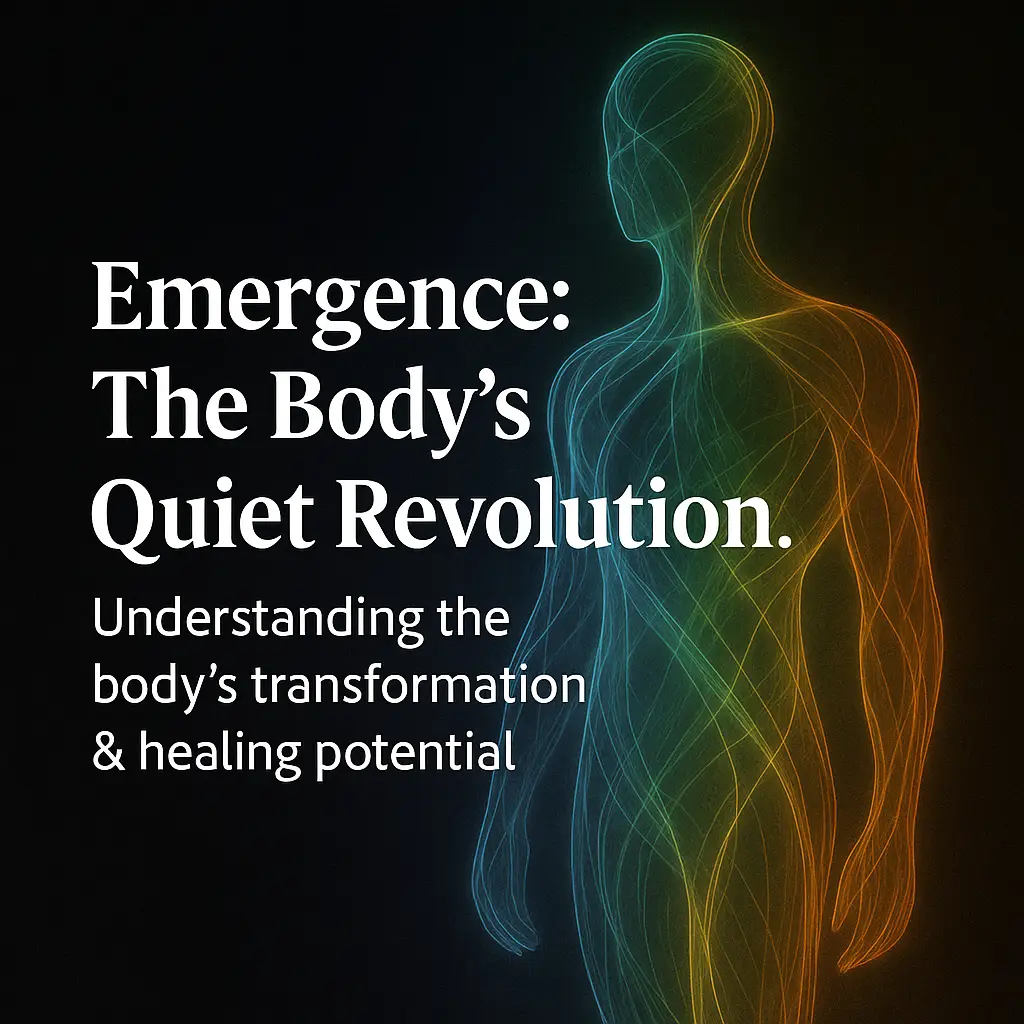
We tend to think in straight lines. Start here, end there. Do the work, get the result. But the body doesn’t operate like a factory.
It operates like a forest.
In a forest, growth is not linear. It’s ecological—emerging from networks of interdependence, seasons, decay, and surprise. This is how the body heals, evolves, and ultimately transforms.
This is emergence—when small, slow, often invisible processes suddenly produce something entirely new. A shift in posture. An absence of pain. The feeling of being organized from the inside out.
The Patience of Complexity
We’re conditioned to seek fast results. We want the “fix.” But when it comes to pain, performance, or even mental clarity, the body doesn’t respond to force. It responds to presence.
Real change in the body comes from layered input—postural precision, fascial tensioning, nervous system reset, fluid movement, mindful breath. None of these alone are a magic bullet. But together, they build the terrain for something deeper to emerge.
Like in ELDOA, where you’re not just doing an exercise to open up space at a specific joint—you’re turning on and integrating that joint with the rest of your spine, nervous system, and body. It’s a deliberate act of reconnection, aligning with the principles of PIT and DAM to allow for more fluid, intelligent movement. Or in myofascial stretching, where you find the restriction and *wait* for the tissue to yield. Or in proprioceptive re-education, where you’re not just retraining muscles—you’re awakening forgotten intelligence.
Working “With” the Body, Not Against It
Techniques rooted in osteopathic principles—like ELDOA, MFS, segmental reinforcement, and fluid proprioception—are not about overpowering dysfunction. They’re about partnering with the body’s own capacity to reorganize.
You’re not “fixing” the body.
You’re giving it the information it needs to *emerge into coherence*.
This takes patience. Curiosity. And yes, repetition. But the rewards go far beyond relief. You move with more integrity. You live with more resilience.
This layered, systemic process is at the heart of our Osteopathic Exercise and Therapy Techniques, where you’ll find tools that support the body’s natural ability to adapt and reorganize.
More Than You Think You Are
Emergence reminds us that we’re not limited by where we are now.
With the right input, the right environment, and the willingness to work with complexity, we don’t just recover—we transform.
You may be showing up to resolve pain or feel better in your joints. But what if this process gave you more than that? What if you discovered strength, confidence, and alignment that you didn’t think was possible?
Not by forcing your body to comply.
But by allowing your system to do what it’s built to do: adapt, organize, and emerge.
Your body is not a project to be completed
It’s a living, dynamic system that—given the right relationship—can become more than you imagined.
That’s the quiet revolution.
That’s emergence.
Follow the Thread—Where Movement, Fascia, and Freedom Align
Find more insight, reflection, and fascia-informed care across the platforms where we stay connected:

Leave a Reply